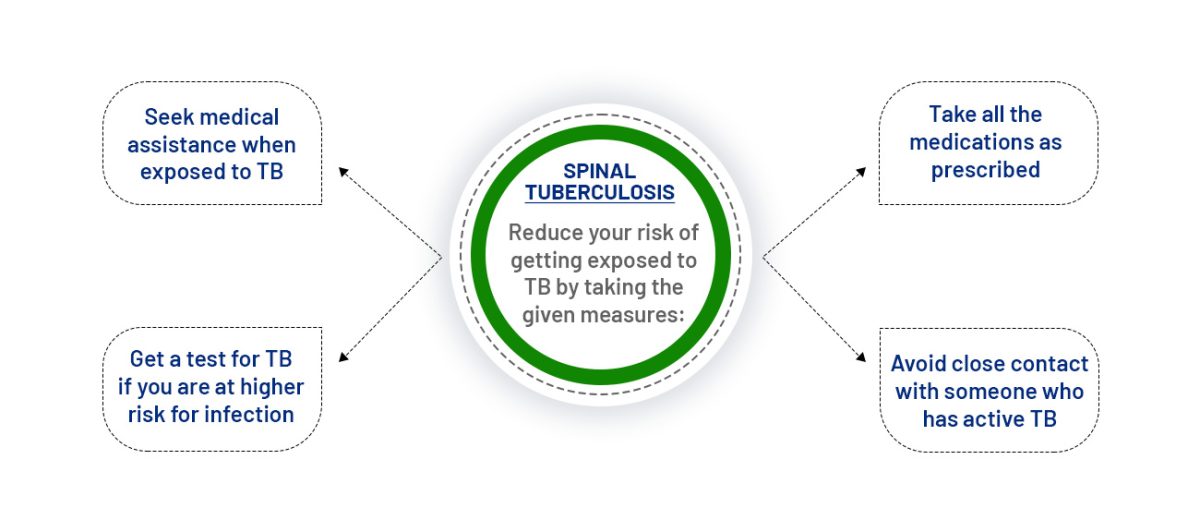Spinal Tuberculosis
- Spinal tuberculosis which is also known as Pott’s disease. It is a spinal infection that tuberculosis causes and can lead to osteomyelitis, spinal mechanical instability, and kyphotic deformity.
- Good knock to diagnose this condition with the help of CT-guided biopsy sent for acid-fast bacilli.
- The treatment-related to this is usually bracing and antituberculosis antibiotics in the absence of neurological defects or some mechanical instability.
- In the presence of neurological deficits, Progressive kyphosis, and mechanical instability, the doctor manages the surgical treatment.
With the help of a neurologist in Ludhiana, you could manage such health conditions without any difficulty.
Epidemiology
- Incidence
- There has been an increase in the incidence of tuberculosis because of the increasing immunocompromised population demographics.
- We can see it in the HIV-positive population and especially in those patients with CD4 + counts of 50 to 200.
- Anatomic location
- Almost 15% of patients with tuberculosis will have extrapulmonary involvement in the spine. You can specifically sit in the thoracic spine, which is the most common extrapulmonary site.
- Almost 5% of all tuberculosis patients have spine involvement.
The best neurologist will manage to control spinal tuberculosis.
Etiology
- Pathoanatomy
- Early infection
- It begins in the metaphysics of the vertebral body.
- It spreads under the anterior longitudinal ligament and leads to contagious multilevel involvement.
- Non-contagious segments or skip lesions(15%)
- Paraspinal abscesses formation (50%).
- Generally, the anterior can be pretty massive, which is much more common in tuber classes than pyogenic infection.
- In the beginning, it does not involve the Disc space That distinguishes it from pyogenic osteomyelitis, but the doctor can miss diagnose it as a neoplastic lesion.
- Chronic infection
- Severe kyphosis
- It means deformity in non-operative cases is around 15°. In 5% of patients, the deformity is less than 60°.
- higher rate of progression of kyphosis when there is an involvement of the vertebral body and posterior elements.
- dr often diagnose the infection late as there is frequently much more severe chi poses in granulomatous spinal infection then pyogenic infection.
- In adults
- Kyphosis stay static after healing of disease
- In children
- kyphosis the props in 40% of cases because of growth spurt.
- Classification of progression
- Type 2, Reduction in progression with growth.
- Type 3, there are minimal changes during either active or healed phases.
- Severe kyphosis
- Early infection
Symptoms
- Onset of signs of tuberculosis spondylitis are generally more insidious as compared to pyogenic infection. Some of the symptoms include:
- Constitutional symptoms
- chronic illness
- Night sweats
- Malaise
- weight loss
- back pain
- There is often a lack of symptoms that only occurs after major destruction and deformity.
Physical exams
- Kyphotic deformity
- Neurological deficit which is present in 10 to 47 percent of patients with spinal tuberculosis.
- Mechanism
- abscess, Granulation tissue, Caseous tissue, Tubercular debris causes mechanical pressure.
- Subluxation or dislocation of paraplegia Causes mechanical instability from Healed diseases can occur with severe deformity.
- Stenosis from ossification of ligamentum flavum adjacent to severe kyphosis.
- Mechanism
Treatment
- Laminectomy
- Indication
- Extradural extraosseous granuloma subdural granuloma
- decompression and myelotomy indications.
- intramedullary granuloma
- Indication



